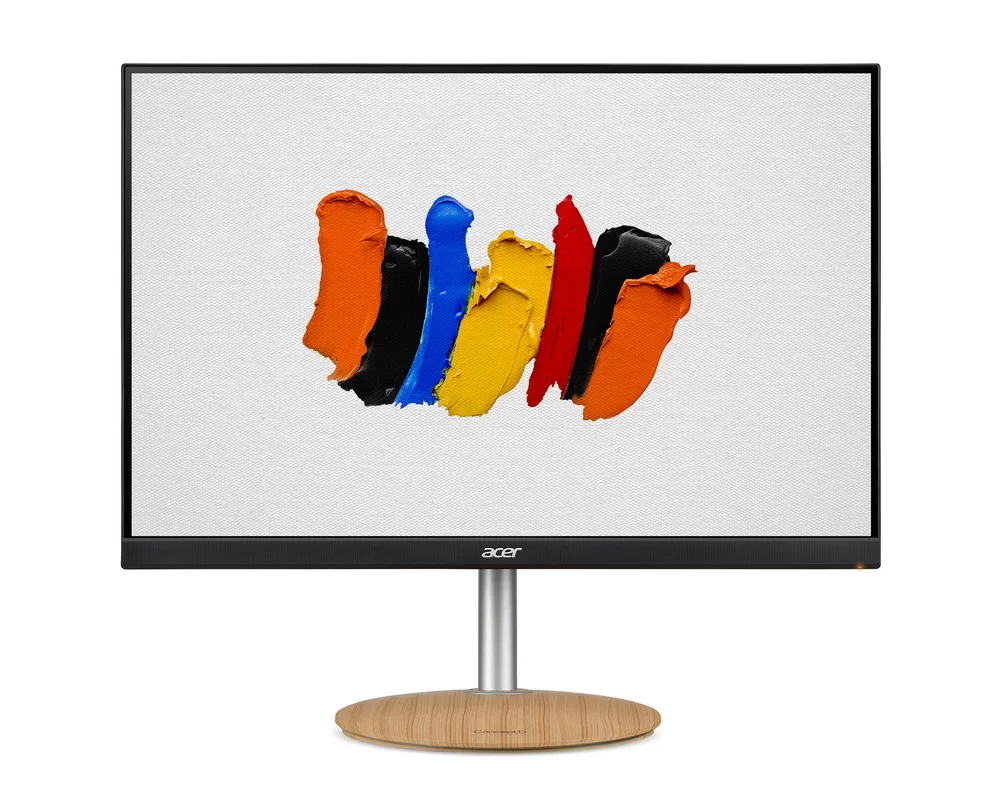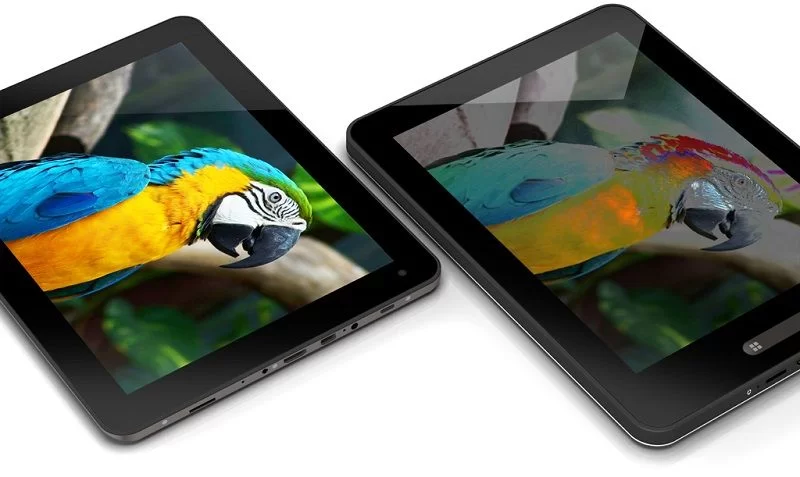Screen manufacturers are constantly developing and inventing new technologies to provide the best picture quality. The times when the display could show only one color have long and successfully passed — 40 years ago. Modern screens must display millions of colors (even if the human eye cannot distinguish one sub-tone from another), provide wide viewing angles, and ideally add some “drama” to the image so that the picture is truly cinematic and impressive.
To date, the best color reproduction, contrast and saturation are provided by three types of matrices — OLED, AMOLED and QLED. But they are insanely expensive. AMOLED is found only in flagship smartphones, while Samsung’s QLED panels can be found in TVs starting at $1,000.
In the middle (“adequate”) price segment there are two technologies — TFT and IPS. They can be found in almost all types of mobile and home electronics — computer and laptop monitors, smartphone and tablet screens, even in smart watches. And the question arises — what, in fact, are the differences between the types of IPS and TFT screens?
A bit of theory: how do screens work in general?
The design of screens can surprise a person who is not familiar with the technology of their production. Each of the pixel-points is not a small LED, as it might seem, but an electromechanical system of translucent thin films.
These thin films are driven by electricity. As long as no current is applied to them, they are located at an angle of 90 degrees to the light source located behind the matrix. In this case, the pixel appears white (or black if the screen is off). As soon as electricity is applied to the matrix, the film rotates — and thereby colors the light. In general, it looks like just a system of fine filters, they are just very small and are in huge numbers.
These films work on liquid crystal technology. Actually, that is why most modern displays are called liquid crystal displays. Since they are made of semiconductor materials, they are, in fact, full-fledged transistors.
That is why the LCD screen is called TFT-matrix. TFT stands for thin film transistor.
In traditional models of TFT screens (more precisely, matrices, which are now collectively referred to as “TFT”), the above thin color and polarizing films are arranged in a vertical spiral. It is quite practical, and in production it is simple. But this technology also has small drawbacks, we will consider them further.
IPS (which stands for in-plane switch) is the actual evolution of TFT technology. The only difference is the location of the translucent plates. They are not placed in a vertical spiral, but in the same horizontal plane. And thanks to this, several advantages are achieved at once.
Description and features of TFT screens

“TFT” most often refers to screens made using TN + TFT technology. However, there are other options, but they are not so widespread. Such matrices are now most often used in computer and household appliances — from monitors to display systems in advanced refrigerators.
The main advantage of TFT is its low price. It is achieved due to the simplicity in production.
In addition, TFT screens are very often chosen by gamers. After all, such displays have another major advantage — high response speed. Translucent films rotate almost instantly, providing a quick change in the “picture”. This is especially important in dynamic games — shooters, action games, as well as various online projects. So, for example, modern TFT-screens provide a response speed of 1 millisecond.
However, for a low price, you will have to “pay off” with a relatively average color rendering. Hue saturation is weak, which makes the image look somewhat dull compared to IPS, LTPS or AMOLED matrices. Also, TFT screens have very small viewing angles — if you look at the display from the side, above or below, the shades are distorted up to complete blackout in some cases.
Key advantages of TFT screens:
-
The response speed is from 1 millisecond. This provides an almost instantaneous change in the image on the display, which is especially important for games;
-
Low power consumption. Smartphones and tablets equipped with such displays have a longer battery life than their counterparts;
-
Low price. Monitors and displays with matrices of this type are relatively cheap, with the exception of special gaming options.
-
Key disadvantages of TFT screens:
-
Relatively low color rendering. Colors and hues on such a display can appear very dull. This is a major disadvantage when using monitors in design and printing, because what will be seen on them will not match the shades on paper or other media;
-
Small viewing angles. Already at a deviation of 20–30 degrees from the plane of the screen, the displayed shades are deformed — they become darker or lighter. And at 70 degrees, the image on low-quality displays becomes completely indistinguishable.
Today, TFT monitors are used mainly by gamers, and have also survived in the lower price segment. In the mobile device market, this technology is being replaced by a new one called LTPS.
Description and features of IPS screens

IPS is a rather “young” technology that appeared relatively recently: in 1996. And it was originally developed in order to correct the shortcomings of TFT. As a result, we managed to achieve excellent color reproduction, deep blacks and whites, as well as a number of other improvements.
But the main advantage of IPS is that it supports realistic color reproduction — 8 bits per channel. Thanks to this, the matrix is able to display the very 16 million shades that are the standard in the industry. IPS screens are a solution for designers, artists and other creative professionals. Why, even the vaunted Retina technology from Apple is a logical development of IPS.
IPS is a good solution for home use as well. Screens made using this technology have excellent viewing angles: up to 178 degrees. Therefore, even if you look at the display from the side or from above, the image will not be distorted and the shades will be preserved. In open spaces, this may seem impractical.
At the same time, IPS technology TVs are practically not made — and there is one important reason for this: such screens are characterized by high power consumption. More precisely, it is greater than that of analogues from the family of liquid crystal matrices. Also, such screens noticeably heat up during operation, especially if you try to update them very often.
However, to ensure a high response rate on such screens still does not work. Even the most modern, top-end models are characterized by a “responsiveness” of 3–5 milliseconds. This makes them unsuitable for “hardcore” gamers.
Key advantages of IPS screens:
-
Realistic color reproduction and extended range of displayed shades. This makes them suitable for professional use — for example, for designers and artists;
-
Good black display. It doesn’t look too gray. However, it depends on the quality of the matrix, some budget options still discolor the shade;
-
The viewing angle is 178 degrees. Shades do not change or deform when viewed from the side, bottom or top of the screen.
-
Key disadvantages of IPS screens:
-
Increased power consumption. In monitors or TVs, this leads to an unjustified increase in power; in mobile devices, to an accelerated discharge of the battery;
-
Relatively high price, due to the complexity in production;
-
Response time — from 3–5 milliseconds. Because of this, a “loop” may appear behind moving objects, or they may “teleport” on the screen. This is manifested in dynamic games or when watching action scenes.
IPS screens are found in mobile devices, laptops and home computer monitors. However, in smartphones or tablets, they are also gradually being replaced by new types of matrices like LTPS or AMOLED.
Comparison of IPS and TFT

So, let’s compare these two technologies. Common features are taken into account, not the characteristics of certain models.
|
|
|
|
|
Color reproduction
|
Relatively small, as a rule — up to 650$ shades
|
Extended, typically up to 16 million shades
|
|
Response time
|
From 1 ms
|
From 3 ms
|
|
Viewing angle
|
up to 70 degrees
|
up to 178 degrees
|
|
Energy consumption
|
Relatively low
|
Relatively high
|
|
Price
|
Relatively low
|
Relatively high
|
|
Modern usage
|
Monitors, laptop displays, TVs
|
Screens of mobile devices, professional monitors
|
When choosing between IPS and TFT, it is better to give preference to the first technology. Unless, of course, the response time is not critical. But it is worth considering that in everyday use (web surfing, working with office programs, other “non-dynamic scenes”), the difference between a 1 ms and 5 ms update cannot be discerned.


Добавить комментарий
Для отправки комментария вам необходимо авторизоваться.